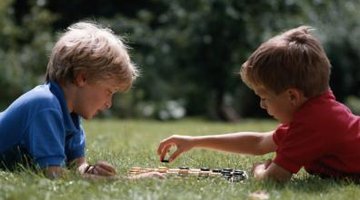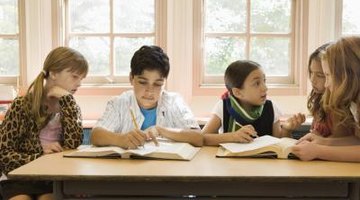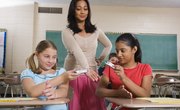Being unprepared for a new social situation can cause anxiety in even the most confident adult, but for children with social deficits caused by autism spectrum disorders or intellectual disabilities, social anxiety can be debilitating. Many of these students become frightened or angry in new situations because they thrive in controlled, structured environments and because they struggle to understand the nuances in human communication. Unlike some of their typical peers, these students require explicit teaching and modeling of social skills.
Express Clear Expectations
For students who need direct social instruction, vague rules and implied expectations simply don't work. While rules like "Be respectful" and "Come prepared" may sound positive, they do not give students enough information. Rules must provide a clear picture of what appropriate behavior looks like; for example, use a rule matrix that lists the general rules at the top, followed by bulleted lists containing more detailed instructions. Under "Be respectful," you might include "Speak quietly in class" and "Use kind words."

Explicitly Teach and Model Skills
Students with social deficits struggle to pick up on social cues and need explicit instructions to learn skills other students might pick up through simple observation. For example, students with ASD often have difficulty reading facial expressions, so they benefit from looking at pictures of faces and identifying the corresponding emotion. Social instruction can focus on skills like participating in conversations, picking up on nonverbal cues or behaving appropriately in the classroom. Various instructional strategies to teach these skills include social story scripts, video modeling, role playing and color-coded interpersonal diagrams. The parent or teacher should then model the new skill as often as possible.

Provide Opportunities for Practice
Teachers can facilitate social skills practice by providing opportunities for natural social interaction. This is easiest when students are engaged in activities they enjoy, like game time. For example, students with ASD may practice scripted conversations wherein they learn how to initiate play or introduce themselves at the beginning of a conversation. Later, during game time, the teacher can help the student practice this new social skill by facilitating a conversation between the student and one of his peers. For example the teacher might say, "I see that John doesn't have a game to play. Maybe you can introduce yourself to him like we practiced, and you can play together." Ideally, the teacher will stay close and provide prompts when necessary.

Reinforce Positive Behaviors
Ideally students will receive immediate reinforcement for positive behaviors. Autism researchers recommend reinforcing behaviors within five seconds. Reinforcements and rewards are child-specific but can include preferred toys, stickers, points or verbal praise. Teachers should also take every opportunity to reinforce good behaviors exhibited by other adults or by typical peers on campus. For example, the teacher may say, "I really appreciate how our principal always says 'Good Morning' when he walks into our room."

Related Articles
References
Writer Bio
Based in Sacramento, Calif., Beth Wenbourne Katz has been writing about education topics since 2006. Katz has taught in the California public schools, working primarily with students with learning, behavioral and emotional challenges. She holds a Master of Arts in special education from San Diego State University.











